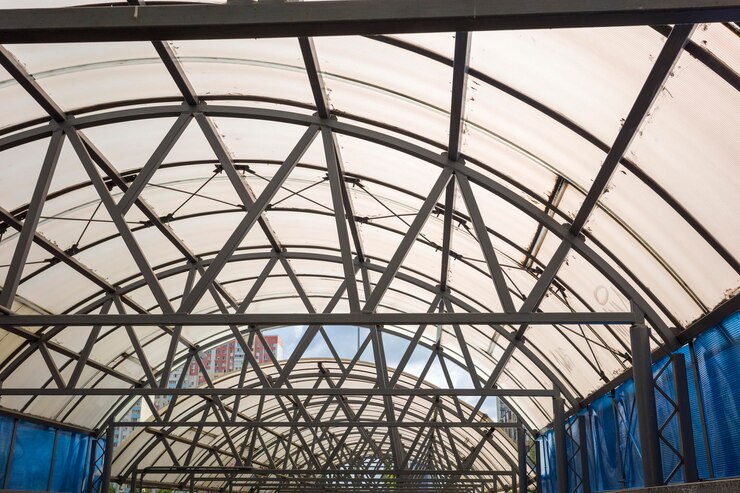Maximizing Returns With Fabric Building Investment: Expert Tips And Advice

The real estate and construction world has witnessed transformative changes over the past decade. As industries grow and evolve, there’s a pressing need for flexible, cost-effective, and sustainable building solutions.
Amidst the myriad choices available today, tension fabric building has risen to prominence. This innovative structure, lauded for its versatility, is capturing the interest of investors and developers alike. But, as with any investment, there are methods and strategies to ensure you get the best bang for your buck.
This article offers expert tips and advice, drawing a clear path toward maximizing your investment. So, keep reading if you want to boost your returns and make the most of your fabric-building investment.
Understanding The Basics Of Fabric Buildings
Before delving deeper into investment strategies, it’s essential to recognize the inherent attributes of fabric buildings. Amid the global energy transformation, these structures exemplify innovation and efficiency.
Below are some key characteristics that set them apart:
- Durable: Fabric buildings are synonymous with durability. Crafted with premium materials, they withstand various environmental conditions, from harsh sun to heavy snow. This strength ensures longevity and minimizes maintenance concerns.
- Energy efficiency: These structures prioritize energy savings. Their translucent roofs allow natural light, reducing the need for artificial lighting. Additionally, the fabric provides insulation, creating a balanced internal climate that reduces heating and cooling expenses.
- Versatile in design: The adaptability of fabric buildings is commendable. Their modular design caters to diverse uses—from storage solutions to recreational venues. This flexibility ensures the structure remains relevant even as needs evolve.
- Quick to install: In the construction world, time is invaluable. Thanks to prefabricated parts, the rapid installation of fabric buildings ensures swift project completion, allowing occupants to utilize the space sooner.
It’s worth noting that specific fabric structures with reinforced supports offer enhanced stability and resilience, making them an even more attractive choice for various applications.
Choosing The Right Location
Selecting the optimal location is pivotal for the success of your fabric building. The right site can boost operational efficiency, enhance accessibility, and even affect the structure’s longevity.
Below are crucial factors to consider when pinpointing the ideal location:
- Easy transportation access: A location near major transportation routes like roads, railways, or ports can streamline logistics. Such proximity ensures the smooth movement of goods, services, or attendees if your building serves a communal purpose.
- Local regulations and codes: Every region has its construction codes and regulations. Before settling on a location, familiarize yourself with local laws to prevent potential legal challenges. Ensure the land has zoning for your intended use, and you can obtain any necessary permits.
- Environmental considerations: The local climate and topography play a role in determining the suitability of a site. Areas prone to flooding, for instance, might require additional measures, like raised foundations. Likewise, windy regions might necessitate reinforced anchoring systems for your fabric building.
- Potential for future expansion: It’s wise to think ahead. If you need to expand your building or add additional structures in the future, ensure the location has sufficient space. This forward-thinking approach can save relocation costs and hassles down the road.
- Accessibility for target audience: If you plan to use the fabric building for commercial or communal purposes, think about its accessibility for your target audience. A remote location might deter potential customers or attendees, while a central, easily reachable spot can boost footfall.
In essence, the location of your fabric building plays a multifaceted role, influencing functionality, compliance, and long-term viability. Making an informed choice here lays a solid foundation for maximizing returns on your investment.
Tips To Enhance Return On Investment
Achieving a commendable return on your fabric building investment requires more than the initial financial outlay. It’s about strategic planning and building a solid financial foundation for the future. Proactive management and understanding potential avenues for revenue generation and cost savings play pivotal roles.
Below are essential strategies to bolster your return:
- Regular maintenance: While fabric buildings are renowned for their durability, consistent maintenance is vital. A well-maintained structure not only extends its lifespan but also optimizes its functionality. Scheduling periodic checks and addressing minor issues before they escalate can prevent costly repairs in the future.
- Optimize space: Efficient use of interior space can drastically improve the building’s utility. Implementing organizational solutions like shelving, partitions, or mezzanine floors can amplify storage capacity or usable space, depending on the building’s purpose.
- Stay updated with industry trends: The fabric building industry is ever-evolving with new materials, technologies, and design approaches. Staying updated ensures your building remains competitive and meets modern demands, whether it’s for energy efficiency, design, or functionality.
- Diversify usage: Depending on the structure’s design, consider diversifying its use. For instance, a fabric building primarily used for weekday storage could be rented out for events over the weekend, creating an additional revenue stream.
- Invest in energy-saving features: Enhancing the building’s energy efficiency can lead to significant savings over time. Consider installing energy-efficient lighting, ventilation systems, or solar panels. While there’s an initial cost, the long-term savings can be substantial.
Incorporating these strategies can provide a tangible boost to your return on investment. It’s about leveraging the inherent advantages of fabric buildings while being attuned to opportunities for enhancement and diversification.
Avoiding Common Pitfalls
Investing in fabric buildings has numerous advantages, but there are potential pitfalls like any endeavor. Awareness of these common mistakes can save time and money while ensuring your structure’s longevity and functionality.
Here are some key pitfalls to watch out for:
- Overlooking permits and regulations: Every municipality or region has its regulatory framework. Skipping the necessary permits or not adhering to local building codes can lead to legal complications, fines, or even the need to modify or dismantle the structure once it’s constructed.
- Ignoring local climate: While fabric buildings are versatile, selecting materials and designs that cater to the local climate is crucial. For areas with heavy snowfall, ensuring adequate roof support is vital. In contrast, regions with high temperatures might necessitate UV-resistant fabrics.
- Neglecting regular inspections: Relying solely on the durability of fabric buildings without regular inspections can lead to unnoticed wear and tear. Periodic checks help in the early detection of potential issues, ensuring timely intervention and avoiding higher repair costs.
- Compromising on quality: Opting for cheaper materials or cutting corners during installation might seem cost-effective initially, but it can compromise the building’s lifespan and functionality. Investing in quality materials and skilled labor ensures the structure remains robust and serves its intended purpose efficiently.
- Not considering future needs: While fabric buildings are adaptable, it’s essential to consider potential future needs during the initial design and planning phase. This ensures that the structure can accommodate growth or changes in purpose without significant modifications.
Being vigilant about these pitfalls and strategically preparing can make your fabric building investment more fruitful, ensuring that the structure stands the test of time and continues to meet its intended purpose effectively.
Conclusion
Fabric buildings exemplify the harmony of innovation, versatility, and efficiency in today’s construction landscape. As you chart the course of your investment, it’s crucial to remember that success is rooted in knowledge, foresight, and adaptability. Harnessing the insights from this guide can propel your fabric building venture forward, unlocking unparalleled returns. With informed decisions and strategic actions, the horizon of outstanding investment outcomes awaits.
Read Also:


























Leave A Reply